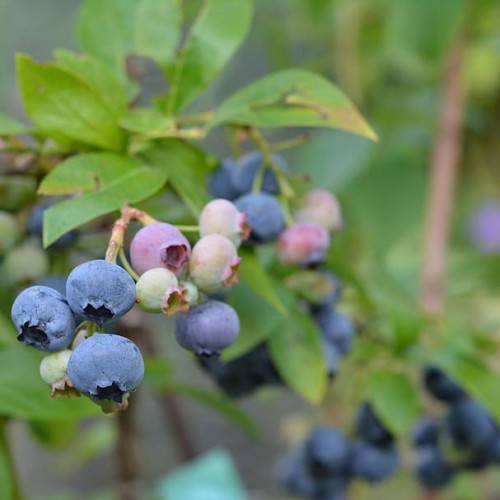
highbush blueberry
Vaccinium 'Duke'
Cycle:
Perennial
Watering:
Frequent
Hardiness Zone:
5 - 8
Flowers:
Flowers In Spring
Sun:
Full sun,part shade
Fruits:
Fruits Ready In Summer
Edible:
Yes
Leaf:
Yes
Growth Rate:
High
Maintenance:
Moderate
Drought Tolerant:
Yes
Care Level:
Medium
watering
When watering your highbush blueberry (Vaccinium 'Duke') plant, it is important not to over water or underwater it. The best way to ensure that your plant receives the correct amount of water is to monitor the soil’s moisture content. Water your highbush blueberry when the top 2" -3" inches of soil is dry. If your soil feels dry beyond the top 3" inches, your plant is likely in need of additional water. A good way to water your highbush blueberry plant is to use a soaker hose or sprinkler. If using a sprinkler, make sure to move the sprinkler around to water the plant evenly. To ensure your plant is receiving the best care, water your blueberry bush deeply 2 to 3 times a week for up to 1 hour. During the summer months, you may need to water more frequently than this.
sunlight
Highbush blueberry (Vaccinium 'Duke') plants require at least 6 hours of sunlight each day to ensure healthy growth and abundant fruit production. Ideally, they should be placed in a spot that receives direct sunlight in the morning and afternoon. If placed in a shady location, then supplemental light might be needed. Additionally, blueberry plants should be situated in an area that is well-drained and receives a regular supply of water. During hot summer months, blueberry plants should be shaded from midday sun and receive ample water to ensure successful growth and fruit production.
pruning
Highbush blueberry (Vaccinium 'Duke') should be pruned twice a year - once in late winter and once in late summer. In late winter, just after the plants have stopped flowering and before the buds begin to swell, prune back the older, unproductive canes. Remove any dead, diseased, or crossing canes and prune the remaining canes to about 1/3 of their original length. In late summer, after harvest, prune back all new growth to encourage branching and renewed vigor. Pruning at this time should also encourage the formation of larger fruit the following year. Pruning at this time should be conservative, removing at most a third of the new growth. Overall, your goal with regular pruning should be to keep the plants open and allow light to penetrate deep into the plant's canopy. This will aid in air circulation, make harvesting easier, and allow for healthier, vigorous plants.
